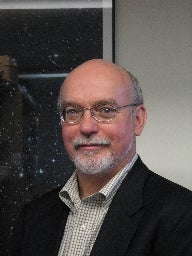Dr. John Peter Huchra died unexpectedly Friday, October 8, 2010, at the age of 61. He was the Robert O. & Holly Thomis Doyle Professor of Cosmology and the Senior Advisor to the Provost for Research Policy at Harvard University.
“This news comes a deep shock to us all,” said Charles Alcock, director of the Harvard-Smithsonian Center for Astrophysics (CfA). “John’s career was marked with distinction for his fundamental contributions to cosmology, his tireless and effective service and advocacy for astronomy, his dedication and brilliance as a teacher and mentor, his devotion to and care for students, and his warmth and humor.”
Huchra came to the CfA in 1976 as a CfA Fellow, having received his bachelor’s degree from the Massachusetts Institute of Technology and his Ph.D. from the California Institute of Technology. He was a Smithsonian Astronomer from 1978 to 2005, when he became Harvard’s Vice Provost for Research and Policy. He was the director of the Whipple Observatory from 1994 to 1998, and served as the Interim Director of the CfA in 2004.
He recently completed his term as president of the American Astronomical Society, and was a member of the National Academy of Sciences and the American Academy of Arts and Sciences. He also served on the Decadal Survey Committee, which just released its report to help guide future investments by funding agencies in ground and space-based astronomical facilities.
Among his many accomplishments, Huchra was perhaps best known for his leadership, with his collaborator Margaret Geller, of the CfA Redshift Survey — a pioneering effort to map the large-scale structure of the universe. The survey uncovered a “Great Wall” of galaxies extending across 500 million light-years of space. This survey and others showed that we live in a “soap bubble” universe with galaxies clustering as though on the surfaces of giant bubbles separated by huge voids.
Huchra made a number of other very important contributions to astronomy, including measurements of the Hubble constant and the discovery of Huchra’s Lens, one of the most dramatic early examples of gravitational lensing.
A short autobiography of Huchra is available online.










